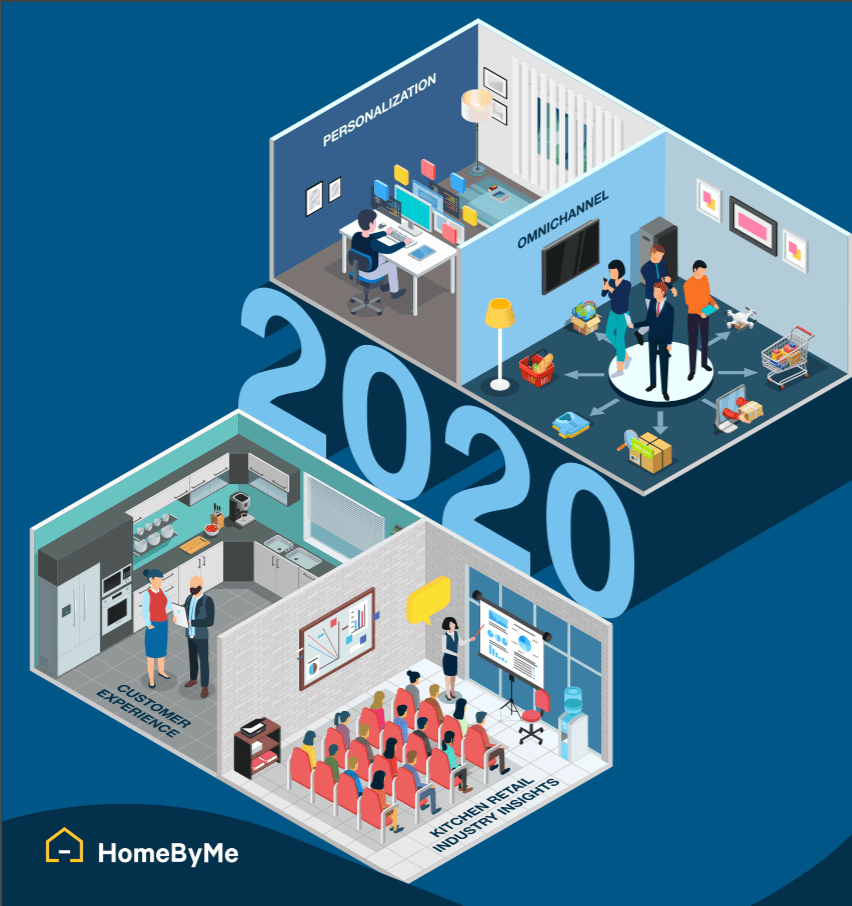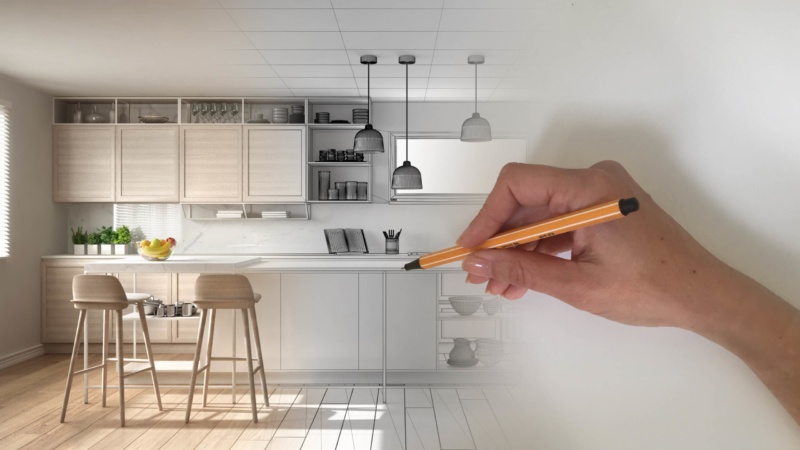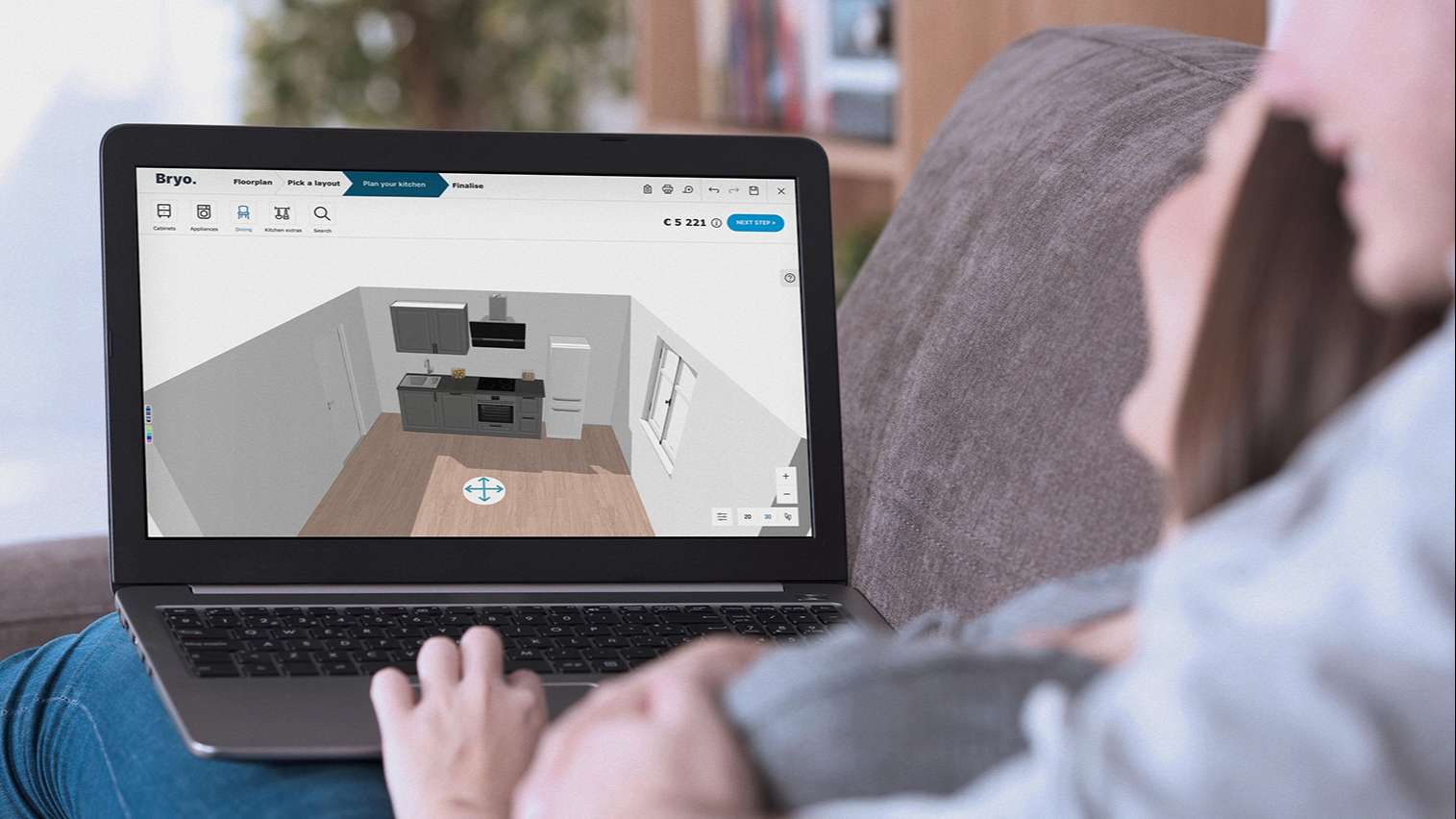Sales and Operations June 15, 2020
20 retail statistics that kitchen retailers must read before planning their 2020 strategy

The retail industry is in the midst of an explosion of big data, transforming businesses with new technological advances and applications of AI.
For kitchen retailers, it’s an opportunity to learn more about their customers than ever before, with data crucially informing future business strategies and enhancing customer relationships with hyper-targeted communications and product offerings.
In addition, it presents increased access to industry wide data that can be utilized to analyze top trends and customer behaviors to adapt retail strategies accordingly. Below are 20 statistics that all kitchen retailers should take note of before planning their 2020 business strategies, putting everything you need in one easy place that can be bookmarked and shared.
Kitchen retail industry insights:
It is an exciting time for kitchen retailers. Amidst positive industry growth predictions, increasing numbers of consumers of all demographics are opting to undertake their own home improvement projects. The benefits for consumers are highly attractive, including fantastic ROI results for kitchen remodeling, fun design projects that flex their creativity and stunning end results. For kitchen retailers, this presents excellent to offer consumers an outstanding customer experience that will set them apart from the competition and capitalize on any revenue growth potential.

1. In a survey looking at major kitchen feature upgrades for 2019, 93 percent of respondents said they are replacing the countertops in their kitchen.
Source: Statista
2. Revenue in the kitchen furniture segment amounts to USD 46.993m in 2019. The market is expected to grow annually by 1.3 percent CAGR between 2019 and 2023.
Source: Statista
3. 43 percent of respondents remodeled because they could “no longer stand the old kitchen.” 40 percent said they wanted to update their kitchen all along but just became financially ready.
Source: Houzz
4. 75 percent of people have an increased sense of enjoyment while they are at home because of a remodeled kitchen.
Source: NHance
5. Small kitchen projects earn a return on investment of more than 83 percent, meaning that for every USD 100 spent on the upgrade, a home’s value increases by an average USD 83.
Source: Remodeling Magazine
Omnichannel preferences:
Kitchen retail customers are increasingly using multiple channels in their paths to purchase. There are different cross-device and online/offline preferences per demographic, however the most common buyer journey involves a combination of online research and in-store design validation or transactions. Consumers expect to move seamlessly between online and offline channels, creating an opportunity for kitchen retailers to use tools such as 3D planning solutions to facilitate this.

6. 73 percent of consumers use multiple channels to shop.
Source: Harvard Business Review
7. 71 percent of consumers want a consistent experience across all channels, but only 29 percent say they actually get it.
Source: Gladly
8. 53 percent of millennials do not think store associates have the tools they need to provide great customer service, such as mobile devices for looking up customer profiles and recommending products.
Source: Salesforce
9. 83 percent of the retail decision makers and 74% of the store associates surveyed agreed that shoppers will have better experiences when associates are equipped with technology.
Source: Zebra Technologies
10. 80 percent of Americans are online shoppers. 50 percent of them use a mobile device for shopping.
Source: Pew Research
Personalization:
With the wealth of customer data now available and highly personalized services such as Netflix or Amazon widely used, consumers now expect tailored communications and customer experiences from kitchen retailers. Those that provide personalized product recommendations based on customer preferences, or discounts based on browsing habits, will see higher sales conversions, more meaningful relationships built with customers and improved customer satisfaction levels.

11. 48 percent of shoppers have left a brand’s website and made a purchase from a competitor because of a poorly personalized experience.
Source: Marketing Dive
12. 64 percent of consumers do not think retailers truly know them.
Source: Salesforce
13. 62 percent of retailers report that the use of information (including big data) and analytics is creating a competitive advantage for their organizations.
Source: IBM
14. Retailers are expected to spend USD 7.3 billion on AI by 2022.
Source: Capgemini
15. 33 percent of consumers who ended their relationship with a company last year did so because the experience wasn’t personalized enough.
Source: Accenture
Customer experience:
Price is simply no longer king. When researching purchases and embarking on a kitchen remodeling project, there are many more factors that consumers consider important when choosing a retailer. Retailers that add extra value to the purchase journey can expect to see significant revenue growth, from a consumer market that values added functionality online, expert advice from in-store staff, and expansive product catalogs to choose from and be inspired by.

16. 84 percent of organizations working to improve CX reported an increase in revenue.
Source: Dimension Data
17.A moderate increase in customer experience generates an average revenue increase of USD 823 million over three years for a company with USD 1 billion in annual revenues.
Source: Temkin Group
18. 79 percent of consumers say being able to engage with knowledgeable store associates is “important” or “very important.”
Source: Tulip
19. 70 percent of U.S. consumers say they have spent more money to do business with a company that delivers great service.
Source: American Express
20. 68 percent of Gen Zers surveyed said a wide choice of products was the most important factor when choosing where to shop.
Source: IBM


